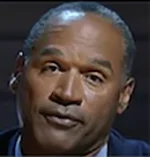 |
| Bob Brody |
The document a colleague emailed for your review just landed in your in-box. “Here you go,” the cover note says. “Please advise.” Your feedback is hungrily awaited.
The attachment is either a memo to a client or a press release or a media advisory or an activity report or a pitch note for a reporter or a blog post or an award submission or an op-ed piece or a PowerPoint deck for a new business presentation.
Whatever. It’s got words in it. Hundreds, in fact.
You take a quick look, scanning and skimming. Then, just to confirm your original suspicions, you look closer and harder. It has more lapses in logic than a surrealist painting, more structural defects than the Leaning Tower of Pisa. It’s riddled with claims unsupported by fact and corporate boilerplate that could only be construed as high-grade bullshit. And those are its most promising features.
The upshot? Let’s just say it’s off the mark. No, let’s call it downright disappointing. Then again, let’s deem it a disaster.
I’ve played editor now for a long time—47 years in case you’re counting. I’ve edited colleagues junior and senior at public relations agencies small, medium-sized and large, staff reporters and freelancers at newspapers and magazines, and guest contributors to my former blog. I’ve edited clients, too—CEOs, university presidents, entrepreneurs. I’ve even edited my son, my daughter and—to the extent she would let me (meaning never)—my wife.
For just as long, but in my role as a writer, I’ve also teamed up with a lot of editors—higher-ups at the PR firms (my first assignment called for me to rewrite a press release seven times)—and gatekeepers at publications ranging from Esquire, The Atlantic and Glamour to the New York Times, Wall Street Journal and Washington Post.
So I’ve presumably picked up a few valuable lessons, otherwise known as best practices, about editing. Here, then, are what I consider the seven biggest mistakes people make:
1. Going negative. Yes, you could describe the pitch note as too vague or label it thin on facts. Better, I believe, to suggest it be more specific and substantial. I know, I know. You’re tempted to say, “I personally know a chimpanzee who composes more coherently than this.” But please, I beg you, think again. Even a critique that finds fault can stay positive (though sugarcoating the truth is a disservice). So start with “I like this” or “This is good” or “I can see this appealing to a reporter.” Then, rather than say how it’s gone wrong, say how it can be made right.
2. Being discouraging. If a memo to a client has gone awry, you’re entitled to tell its author, “This fell at least a mile short of my expectations” or “This is going to take a ton of reworking.” But where exactly would such a withering takedown get anyone? Will your colleague feel properly motivated? In a word, no. Better—but with all due honesty—to be a jot generous. Say “This is a good start.” Or, “With more work this could turn out well.” Paint a happy outcome that fuels aspiration.
3. Doing everything yourself. I once showed a new colleague on the same account a press release I had drafted. Big mistake. An hour later it came back to me strewn in red—as if literally bloodied—with track changes. Please feel free to imagine me feeling deeply insulted. Now maybe my colleague knew better than I. But he moved ahead with his overhaul without discussing or explaining anything to me first, much less securing my buy-in or consent. Can you spell rude?
4. Denying the opportunity to be independent. A corollary to the above imperative: if a blog post needs polish, your colleague deserves a choice about who should now do what. I always ask, “Would you prefer I take over the project from here or try improving it yourself?” Sometimes a colleague would rather play to her strengths in, say, client relations or crisis management. But most colleagues, perhaps out of pride, opt to give it a go themselves. Only then will they ever discover how much they can accomplish unassisted.
5. Being heavy-handed. I used to be much more nitpicky editing others. It’s taken me years to realize that whoever edits least often edits best. Often now my track changes, rather than edits, are mostly comments, questions and suggestions in the margins. Even as you cite specifics, venture a topline response, an overarching “umbrella” statement. Oh, do tinker and do tweak But give your colleagues enough wiggle room to read between the lines and solve some issues themselves.
6. Relying on generalities. I once turned in an investigative article to a science magazine, only for the top editor to tell me to do it again. I asked for details. “Just do it over,” he said. So I had no choice but to practice clairvoyance and try to fathom what he meant. Feedback should get a little granular. Instead of saying “it’s too long,” say “cut it by about one-third.” Instead of saying “it jumps around too much,” say “The third paragraph might belong after the fourth.”
7, Digging too deep into the weeds. For several years I freelanced for an editor who invariably needed about an hour on the phone to discuss my latest 750-word article. This approach always struck me as overkill. Eventually I developed editorial PTSD and, for the sake of salvaging my mental health, quit writing for him. So resist the temptation to go down rabbit holes. No need to debate this semi-colon, much less how best to deploy that ever-controversial word “and.”
Now, none of these takeaways are graven in marble, or even jelly. Exceptions can be made, and probably should be.
A quick case in point: only three years into my PR career, I wrote a memo to a client—truly a mess, sprawling and unfocused—and showed it to a highly seasoned colleague. He could have come down on me hard—accused me of producing the worst drivel ever to come from a creature walking upright. But no. Instead, he revised it from top to bottom. And came back an object of such exquisite proportions—to the point, instantly understandable, all on a single page—that it belongs in a museum. And I learned—by example, unforgettably, without his ever saying a word—exactly what I needed to learn.
So I contradict myself here. Sue me.
And by the way, once in a while, over the transom comes a document close to perfect. In such instances—occurring annually or bi-annually at best—please feel free to cue “The Hallelujah Chorus” and praise your colleague to the heavens.
The bottom line: it’s all case by case. Apply your best judgment. But equally important, regard editing as more than a craft, more than the manipulating and mastering of words. It’s also a matter of behavior, of conduct either becoming or unbecoming. So even as you’re being candid and blunt and even tough, make sure you’re also kind and civil and fair and decent, too.
By my book, that’s a concept that should never be edited out of our existence.
***
Bob Brody is a public relations consultant, primarily as an editorial specialist and a media strategist. He contributes personal essays regularly to the New York Times, Wall Street Journal and Washington Post, among other publications. He’s author of the memoir Playing Catch with Strangers: A Family Guy (Reluctantly) Comes of Age.


 Southern governors claim they know what's best for their working class, and it's not pay raises... A Ukrainian human rights group played a key role in convincing House Speaker Mike Johnson to hold a vote to send arms to Ukraine, Israel and Taiwan... Trump Media & Technology Group blames short-selling and not lousy outlook for its stock slump.
Southern governors claim they know what's best for their working class, and it's not pay raises... A Ukrainian human rights group played a key role in convincing House Speaker Mike Johnson to hold a vote to send arms to Ukraine, Israel and Taiwan... Trump Media & Technology Group blames short-selling and not lousy outlook for its stock slump. The techniques deployed by OJ Simpson's defense team in the 'trial of the century' served as a harbinger for those used by Donald Trump... People worry about the politicization of medical science just as much as they fret about another pandemic, according to Edelman Trust Barometer... Book bans aren't restricted to red states as deep blue Illinois, Connecticut and Maryland challenged at least 100 titles in 2023.
The techniques deployed by OJ Simpson's defense team in the 'trial of the century' served as a harbinger for those used by Donald Trump... People worry about the politicization of medical science just as much as they fret about another pandemic, according to Edelman Trust Barometer... Book bans aren't restricted to red states as deep blue Illinois, Connecticut and Maryland challenged at least 100 titles in 2023. The NBA, which promotes legalized gambling 24/7, seems more than hypocritical for banning player for placing bets... Diocese of Brooklyn promises to issue press release the next time one of its priests is charged with sexual abuse... Truth Social aspires to be one of Donald Trump's iconic American brands, just like Trump University or Trump Steaks or Trump Ice Cubes.
The NBA, which promotes legalized gambling 24/7, seems more than hypocritical for banning player for placing bets... Diocese of Brooklyn promises to issue press release the next time one of its priests is charged with sexual abuse... Truth Social aspires to be one of Donald Trump's iconic American brands, just like Trump University or Trump Steaks or Trump Ice Cubes. Publicis Groupe CEO Arthur Sadoun puts competition on notice... Macy's throws in the towel as it appoints two directors nominated by its unwanted suitor... The Profile in Wimpery Award goes to the Ford Presidential Foundation for stiffing American hero and former Wyoming Congresswoman Liz Cheney.
Publicis Groupe CEO Arthur Sadoun puts competition on notice... Macy's throws in the towel as it appoints two directors nominated by its unwanted suitor... The Profile in Wimpery Award goes to the Ford Presidential Foundation for stiffing American hero and former Wyoming Congresswoman Liz Cheney. JPMorgan Chase chief Jamie Dimon's "letter to shareholders" is a must-read for PR people and others interested in fixing America and living up to its potential... Get ready for the PPE shortage when the next pandemic hits... Nixing Netanyahu. Gaza carnage turns US opinion against Israel's prime minister.
JPMorgan Chase chief Jamie Dimon's "letter to shareholders" is a must-read for PR people and others interested in fixing America and living up to its potential... Get ready for the PPE shortage when the next pandemic hits... Nixing Netanyahu. Gaza carnage turns US opinion against Israel's prime minister.


 Have a comment? Send it to
Have a comment? Send it to 
No comments have been submitted for this story yet.